
How to Conquer 7 Workouts Named After Lifting Legends
How to Conquer 7 Workouts Named After Lifting Legends
Close gallery popup button 1 OF 81 of 8
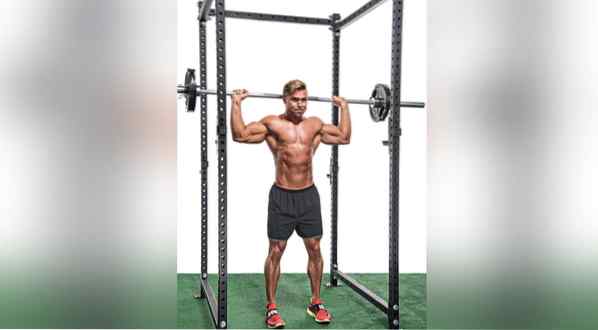
Per Bernal
What's In a Name?
Last month, we featured eight exercises named after the lifting legends who coined the moves. This month, we round out that list with the remaining seven moves for a more muscular and chiseled physique.
2 of 8
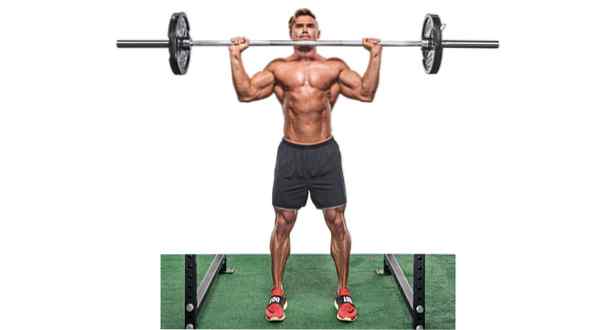
Per Bernal
Bradford Press
Inventor: Jim BradfordTwo-time Olympic weightlifter and silver medalist Jim Bradford developed this exercise to supplement his shoulder strength in the clean and press. This move keeps constant tension on the shoulder area, making it a tremendous accessory movement for any pressing variation.
How to do it:
From either a seated or standing position, grip the bar like you would for a normal shoulder press. Then drive the bar up and back, as if you were drawing a J with the barbell until it finishes just below your skull. From there, push the bar back into the starting position. This exercise is often referred to as the rainbow press because the bar path resembles a rainbow's curved shape.
3 of 8
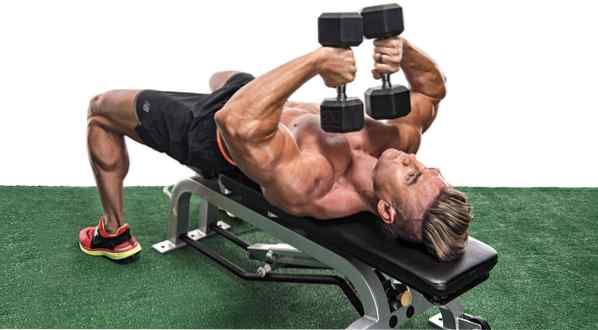
Per Bernal
Tate Press
Inventor: Dave TateThe CEO of Elite FTS and arguably the most well-known powerlifter of all time, Dave Tate has tried every technique and method out there. As a result, the exercise index on elitefts.com is a virtual encyclopedia of training tools and techniques. In need of bigger and stronger triceps for a bigger bench press, Tate experimented and added this lift to that list.
How to do it:
Lie on a bench, holding two dumbbells with your knuckles facing one another. Bend at the elbow until the dumbbells touch your chest. Now press the weight back up.
4 of 8
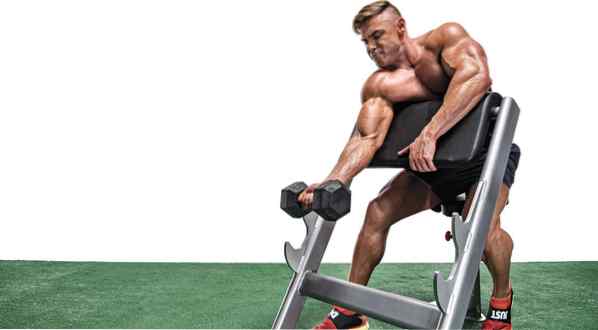
Per Bernal
Scott Curl
Inventor: Larry ScottThe inaugural winner of the Mr. Olympia in 1965, Larry “Legend” Scott packed some serious arm size on his 5'7" frame. He cited the Scott curl-a variation on the preacher curl-as the primary reason behind his 20" pythons.
How to do it:
With a dumbbell in one hand, set up on a preacher bench so the pad is at the bottom of your pecs. Extend your arm all the way down. Flex the forearms and biceps, and curl the weight up. Extend back down.
5 of 8
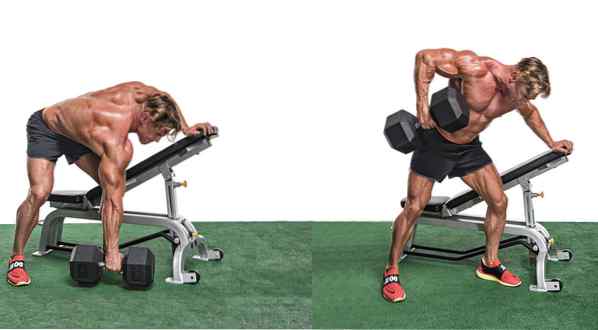
Per Bernal
Kroc Row
Inventor: Matt KroczaleskiA competitive bodybuilder and a powerlifter, Matt Kroczaleski (now Janae Marie Kroc) is the human manifestation of intensity. Her namesake exercise was born as a way to supplement Kroc's specific brand of lifting: heavy and often. It's similar to the dumbbell row, except you're encouraged to cheat the weight up to achieve a high rep count (15 to 40) with heavy weight. Kroc's best is 300lbs for 13 reps. Strapless.
How to do it:
Pick up a dumbbell that's 20-40lbs heavier than you would normally use for a one-arm row. Give it a rip, using a little body English to help move the weight. Keep the reps high (in the 15 to 40 range), and try to fight the eccentric by lowering the weight slowly.
6 of 8
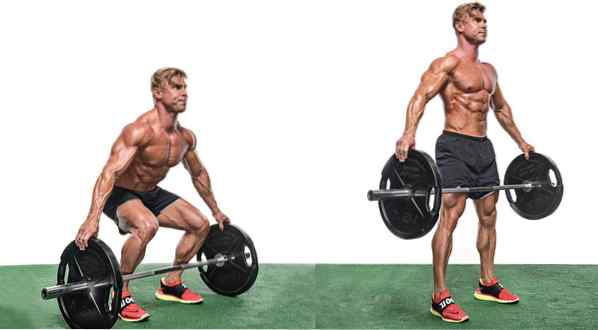
Per Bernal
Reeves Deadlift
Inventor: Steve ReevesA former Mr. America and Mr. Universe, Steve Reeves parlayed his bodybuilding success into an acting career, starring in movies such as Hercules and Goliath and the Barbarians. He was basically Arnold before Arnold. And like Arnold, he was known for hitting it hard. He'd work his full body each session with multijoint movements that recruited maximum muscle. The Reeves Deadlift is his spin on the deadlift for greater grip strength and trap development.
How to do it:
The foot placement and approach to this lift is identical to a conventional deadlift. What's different, however, is the grip. Instead of gripping the knurling on the bar, grasp the plates. The wider setup can be uncomfortable for your spine when performing this exercise, so start light and focus on keeping your back straight.
7 of 8
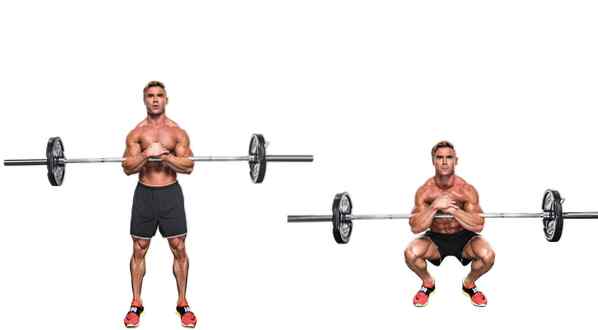
Per Bernal
Zercher Squat
Inventor: Ed ZercherA strongman in the 1930s, Ed Zercher loved unusual, obscure exercises and training implements. So it's no wonder why he invented this devilish squat alternative that, while not the most comfortable, helps keep the lifter in a more upright position and recruits more upper-back muscle than a back squat.
How to do it:
The lifter should have a neutral spine and extension through the ankles, knees, and hips. The Zercher Squat helps you achieve this because of the bar position-it sits in the crook of your elbow. Set up the bar in a power rack, at about chest-height. Rest the bar in-between your biceps and forearms. Grip your hands together. Brace your body, create tension from head to toe, then squat.
8 of 8
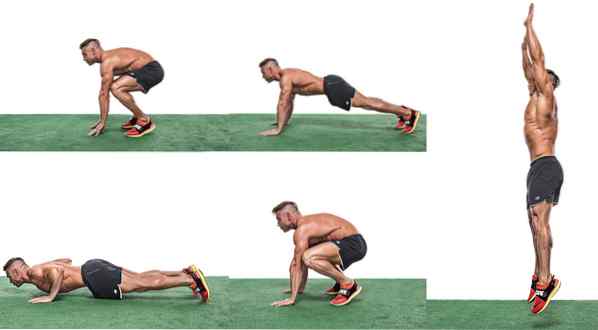
Per Bernal
Burpee
Inventor: Royal H. BurpeeContrary to popular belief, the burpee wasn't named after the puke-tinged belches felt after doing these for a set of 50. There's someone to blame for creating this hellish exercise, and his name is Royal H. Burpee. It was initially designed as a fitness test, not fitness torture. Since then, it has become a go-to finishing move for HIIT practitioners around the globe and a CrossFit staple. It hits every muscle, jacks up the heart rate, and is an excellent bang-for-your-buck movement.
How to do it:
Start in a standing position. Smoothly drop down into a squat. Place your hands on the floor with your knees tucked to your chest. Straighten your legs back, bringing your body into the top of a pushup hold. Perform a pushup. Tuck your knees back up to your chest. Stand tall. Jump as high as you can. Repeat.
Back to introWhat's In a Name?
Last month, we featured eight exercises named after the lifting legends who coined the moves. This month, we round out that list with the remaining seven moves for a more muscular and chiseled physique.
Bradford Press
Inventor: Jim Bradford
Two-time Olympic weightlifter and silver medalist Jim Bradford developed this exercise to supplement his shoulder strength in the clean and press. This move keeps constant tension on the shoulder area, making it a tremendous accessory movement for any pressing variation.
How to do it:
From either a seated or standing position, grip the bar like you would for a normal shoulder press. Then drive the bar up and back, as if you were drawing a J with the barbell until it finishes just below your skull. From there, push the bar back into the starting position. This exercise is often referred to as the rainbow press because the bar path resembles a rainbow's curved shape.
Tate Press
Inventor: Dave Tate
The CEO of Elite FTS and arguably the most well-known powerlifter of all time, Dave Tate has tried every technique and method out there. As a result, the exercise index on elitefts.com is a virtual encyclopedia of training tools and techniques. In need of bigger and stronger triceps for a bigger bench press, Tate experimented and added this lift to that list.
How to do it:
Lie on a bench, holding two dumbbells with your knuckles facing one another. Bend at the elbow until the dumbbells touch your chest. Now press the weight back up.
Scott Curl
Inventor: Larry Scott
The inaugural winner of the Mr. Olympia in 1965, Larry “Legend” Scott packed some serious arm size on his 5'7" frame. He cited the Scott curl-a variation on the preacher curl-as the primary reason behind his 20" pythons.
How to do it:
With a dumbbell in one hand, set up on a preacher bench so the pad is at the bottom of your pecs. Extend your arm all the way down. Flex the forearms and biceps, and curl the weight up. Extend back down.
Kroc Row
Inventor: Matt Kroczaleski
A competitive bodybuilder and a powerlifter, Matt Kroczaleski (now Janae Marie Kroc) is the human manifestation of intensity. Her namesake exercise was born as a way to supplement Kroc's specific brand of lifting: heavy and often. It's similar to the dumbbell row, except you're encouraged to cheat the weight up to achieve a high rep count (15 to 40) with heavy weight. Kroc's best is 300lbs for 13 reps. Strapless.
How to do it:
Pick up a dumbbell that's 20-40lbs heavier than you would normally use for a one-arm row. Give it a rip, using a little body English to help move the weight. Keep the reps high (in the 15 to 40 range), and try to fight the eccentric by lowering the weight slowly.
Reeves Deadlift
Inventor: Steve Reeves
A former Mr. America and Mr. Universe, Steve Reeves parlayed his bodybuilding success into an acting career, starring in movies such as Hercules and Goliath and the Barbarians. He was basically Arnold before Arnold. And like Arnold, he was known for hitting it hard. He'd work his full body each session with multijoint movements that recruited maximum muscle. The Reeves Deadlift is his spin on the deadlift for greater grip strength and trap development.
How to do it:
The foot placement and approach to this lift is identical to a conventional deadlift. What's different, however, is the grip. Instead of gripping the knurling on the bar, grasp the plates. The wider setup can be uncomfortable for your spine when performing this exercise, so start light and focus on keeping your back straight.
Zercher Squat
Inventor: Ed Zercher
A strongman in the 1930s, Ed Zercher loved unusual, obscure exercises and training implements. So it's no wonder why he invented this devilish squat alternative that, while not the most comfortable, helps keep the lifter in a more upright position and recruits more upper-back muscle than a back squat.
How to do it:
The lifter should have a neutral spine and extension through the ankles, knees, and hips. The Zercher Squat helps you achieve this because of the bar position-it sits in the crook of your elbow. Set up the bar in a power rack, at about chest-height. Rest the bar in-between your biceps and forearms. Grip your hands together. Brace your body, create tension from head to toe, then squat.
Burpee
Inventor: Royal H. Burpee
Contrary to popular belief, the burpee wasn't named after the puke-tinged belches felt after doing these for a set of 50. There's someone to blame for creating this hellish exercise, and his name is Royal H. Burpee. It was initially designed as a fitness test, not fitness torture. Since then, it has become a go-to finishing move for HIIT practitioners around the globe and a CrossFit staple. It hits every muscle, jacks up the heart rate, and is an excellent bang-for-your-buck movement.
How to do it:
Start in a standing position. Smoothly drop down into a squat. Place your hands on the floor with your knees tucked to your chest. Straighten your legs back, bringing your body into the top of a pushup hold. Perform a pushup. Tuck your knees back up to your chest. Stand tall. Jump as high as you can. Repeat.



Nimeni nu a comentat acest articol încă.